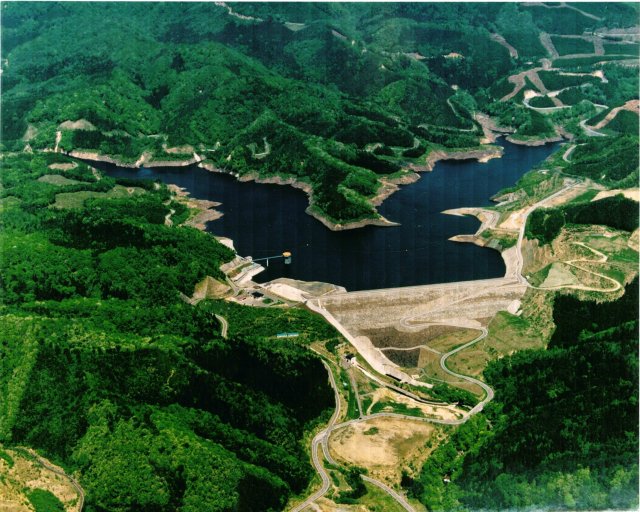21 June 2008
Earthquake triggered landslide at Aratozawa Dam in Kurihara, Miyagi prefecture, Japan
Posted by Dave Petley
Many thanks to reader Ripendra for alerting me to the following, and indeed for doing nearly all the work for this post. The 14th June 2008 earthquake in Japan is known to have triggered a number of landslides, as per earlier posts, but the most notable appears to have occurred at Aratozawa Dam in Miyagi prefecture.
The Aratozawa Dam (Figure 1) is a rockfill dam used for flood control, irrigation and hydro-electric power generation. It is 74.4 m high and 413.7 m long, impounding up to 14,130,000 cubic metres of water.
In the earthquake, a landslide occurred in the catchment of this reservoir. Professor Sassa of the International Consortium on Landslides has provided a brief description of this failure here:
“A huge landslide akin to a massive hole being punched in the side of a mountain was triggered by the Iwate–Miyagi Inland Earthquake at an upstream section of the Aratozawa Dam in Kurihara, Miyagi Prefecture, causing widespread damage and making roads impassable. Kyoji Sassa, head of the International Consortium on Landslides, said the volume of collapsed earth near the dam is believed to be more than 10 million cubic meters. Sassa believes that this is comparable to the largest landslides that occurred as a result of the 2004 Niigata Prefecture Chuetsu Earthquake, which also struck in a mountainous region, and to the volume that fell in single landslides after last month’s cataclysmic earthquake in China’s Sichuan Province.
“It may have been a ‘deep landslide,’ in which a large amount of earth completely collapses from a point deep in the mountain slope,” Sassa said of the landslide set off by Saturday’s quake. In such deep landslides, tremors that seem to thrust up from below cause the pressure of underground water to rise, making the ground above seem to float before abruptly collapsing.
Hiroshi Fukuoka, an associate professor at Kyoto University’s Disaster Prevention Research Institute’s Research Center on Landslides, said there was a complicated relationship between the landslide and the dam downstream of it. “Water is stored in the dam, and it seems that the underground water level rose and caused a high-speed landslide. Earth on the outside of the slope fell into the artificial lake behind the dam, bringing the danger of flooding,” Fukuoka said. “It is necessary to establish whether such a risk exists when building a dam.”
In many ways this description does not really do justice to the landslide that actually occurred, which is rather impressive. Figure 2, from Getty Images, provides a rather more helpful illustration of what occurred here:




 Dave Petley is the Vice-Chancellor of the University of Hull in the United Kingdom. His blog provides commentary and analysis of landslide events occurring worldwide, including the landslides themselves, latest research, and conferences and meetings.
Dave Petley is the Vice-Chancellor of the University of Hull in the United Kingdom. His blog provides commentary and analysis of landslide events occurring worldwide, including the landslides themselves, latest research, and conferences and meetings.